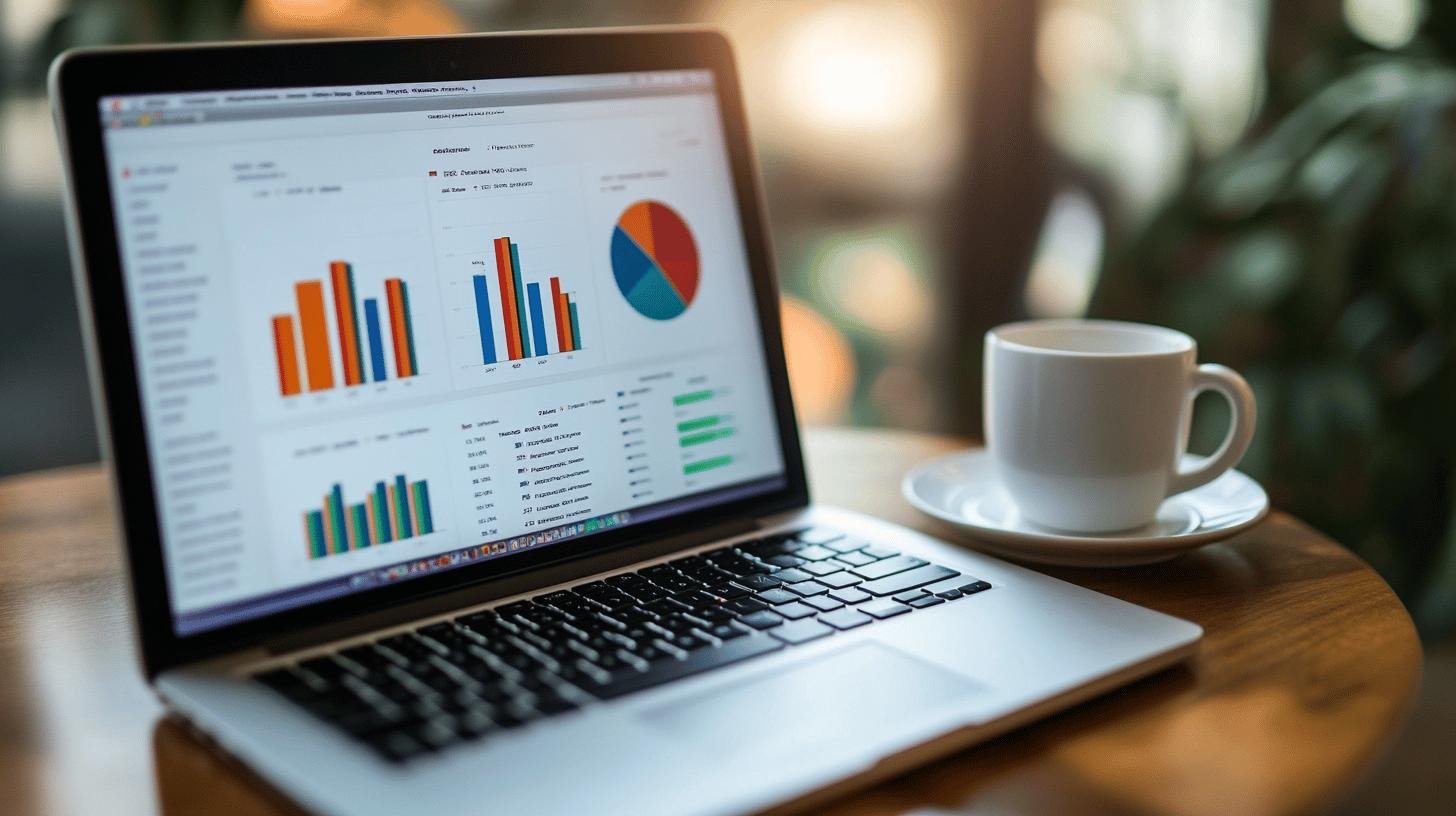Ever wondered why some businesses are always ahead? It’s all about data analytics and business intelligence.
These aren’t just fancy words; they’re the secret to transforming your business strategy. Imagine having a magic tool to help you make smarter decisions and reach your goals.
Curious? Read on to see how data analytics and business intelligence can boost your strategy and lead you to success. 🚀
What Are Data Analytics and Business Intelligence?
Business Intelligence (BI) helps run a business smoothly. It manages daily tasks, makes reports, and helps achieve goals. Think of it as a coach who analyzes past games and plans new strategies.
Data Analytics is like a detective’s job. It involves collecting, cleaning, and studying data to find useful information. This information helps make smart decisions.
Here’s a simple comparison:
- Focus:
- BI: Daily operations and current goals
- Data Analytics: Deeper insights and future predictions
- Scope:
- BI: Reports and visuals
- Data Analytics: Cleaning, modeling, and analyzing data
- Purpose:
- BI: Improve workflow and productivity
- Data Analytics: Discover hidden patterns and trends
- Tools:
- BI: Dashboards and performance metrics
- Data Analytics: Statistical methods
- Outcome:
- BI: Informative reports and actionable insights
- Data Analytics: Data-driven decisions and strategies
BI and data analytics work together to improve decisions. BI uses data analytics to understand data and make smart choices. BI focuses on current operations, while data analytics looks into the future. Together, they help businesses stay on track and plan ahead.
Key Tools and Technologies in Data Analytics and Business Intelligence

Using the right tools and technologies is crucial for making sense of all the data. These tools help businesses turn raw data into meaningful insights, guiding smart decisions. Whether for a small business or a large corporation, having the right tools makes all the difference.
Data Visualization Tools
These tools turn numbers into easy-to-understand pictures and graphs. They help spot patterns and trends.
Reporting Tools
These tools collect data from different sources and create reports. They keep everyone informed.
Predictive Analytics Tools
These tools use past data to forecast future trends. They use methods like decision trees and regression to make predictions.
Some popular tools are:
- Google Analytics: Good for website traffic.
- Tableau: Great for interactive dashboards.
- Power BI: Excellent for business analytics.
- Looker: Ideal for exploring data.
- SAS: Known for advanced analytics.
- QlikView: Helps create guided analytics.
Benefits of Combining Data Analytics with Business Intelligence
Combining data analytics with BI can transform your strategy. It provides a full view of your operations, removes guesswork, and allows for smart decisions. Data analytics finds hidden patterns, while BI interprets this data for daily operations.
| Benefit | Description |
|---|---|
| Data-Driven Decision Making | Uses past and present data to guide future decisions. |
| Real-Time Analytics | Provides immediate insights by analyzing data as it’s created or received. |
| Improved KPIs | Tracks success using specific metrics. |
| Enhanced Data Integration | Combines data from various sources for a holistic view. |
| Operational Efficiency | Optimizes workflows and processes, increasing productivity. |
When it comes to decision-making, integrating data analytics with BI can be a game-changer. You can analyze data from sources like supply chains, marketing analytics, and sales dashboards, making crucial business decisions with confidence. Real-time analytics allows you to act quickly, seizing opportunities as they arise.
Operationally, this integration enhances efficiency. By continuously monitoring data and tracking key performance indicators (KPIs), businesses can identify areas needing improvement. This keeps everything running smoothly, from production lines to customer service.
Examples of how this integration has improved business outcomes include:
- Enhanced customer service: Predicting customer needs and tailoring services.
- Optimized marketing campaigns: Targeting the right audience with precise ads.
- Efficient inventory management: Reducing overstock and stockouts.
- Better financial planning: Forecasting revenue and managing expenses accurately.
Harnessing data analytics and BI helps businesses stay ahead and drive success.
Implementing Data Analytics and Business Intelligence in Your Business

Proper implementation of data analytics and BI turns raw data into actionable insights. When done right, it can streamline operations, improve decision-making, and boost overall performance.
Data Capture
Collect and store relevant data. Gather data from sources like sales records and social media. Store it securely.
Data Analysis
Clean the data to remove errors. Use tools to understand events and find patterns. Apply statistical methods for deeper insights.
Monitoring and Real-Time Analytics
Keep an eye on data continuously. Set up dashboards and alerts to track key metrics and performance.
Best Practices:
- Data Quality Management: Ensure accuracy and reliability.
- Data Governance: Manage data availability and security.
- User Training: Teach your team how to use BI tools.
- Integration: Combine data from different sources for a complete view.
- Scalability: Choose solutions that can grow with your business.
Real-World Examples
Seeing how data analytics and BI work in real life can show their benefits. Here are some examples:
- Healthcare: Hospitals use BI and analytics to track patient data and manage supplies. The FDA uses data analytics to improve public health by analyzing food-borne diseases.
- Retail: Stores use data to personalize marketing and manage inventory. Analyzing customer behavior helps target ads, boost sales, and improve satisfaction.
- Financial Services: Banks use data to manage risks and detect fraud. They analyze transactions to spot suspicious activities and make better lending decisions.
Other Examples:
- Manufacturing: Improves supply chain operations and reduces downtime.
- Education: Customizes learning based on student performance.
- Telecommunications: Enhances customer service by predicting network issues.
- Energy: Monitors and optimizes energy use.
These examples show how data analytics and BI can improve different areas of a business.
Final Words
Data analytics and business intelligence are key to smart decision-making. BI helps with daily operations through detailed reports, while data analytics provides deep insights from data.
From tools like Google Analytics to methods for predicting trends, these technologies make data useful. Combining data analytics with BI can transform your business strategy and lead to success. 🚀
FAQs
What is data analytics in business intelligence?
Data analytics involves studying data to find useful information that helps make decisions.
How is data analytics used in business intelligence?
Data analytics helps interpret data to make decisions and create reports.
What is the difference between business intelligence and data analytics?
BI manages daily operations and creates reports. Data analytics finds deeper insights and predicts future trends.
What are data analytics and business intelligence jobs like?
These jobs involve analyzing data, creating reports, and providing insights to help with decisions.
What certifications are available for data analytics and business intelligence?
Certifications like Certified Business Intelligence Professional (CBIP) and Google Data Analytics Professional Certificate are available.
What is business analytics and business intelligence?
Business analytics improves decisions by analyzing data. Business intelligence uses this analysis to report and manage operations.
How does data analytics and business intelligence differ?
Data analytics finds patterns and insights. BI uses these insights for decision-making and reporting.
Which is better, data analytics or business intelligence?
Neither is better; they work together. Data analytics provides insights, and BI uses them for decision-making.
How can I learn data analytics and business intelligence?
Online courses and certifications on platforms like Coursera and LinkedIn Learning can teach you these skills.
What is the salary for professionals in data analytics and business intelligence?
Salaries vary, but on average, data analysts and BI professionals earn around $70,000 to $100,000 per year.




